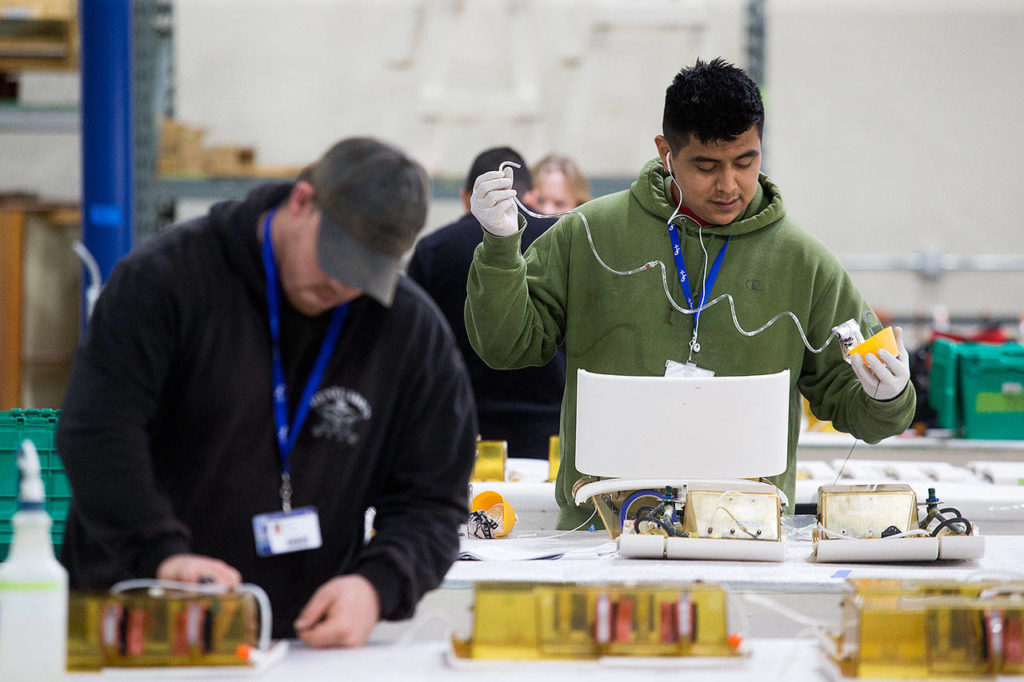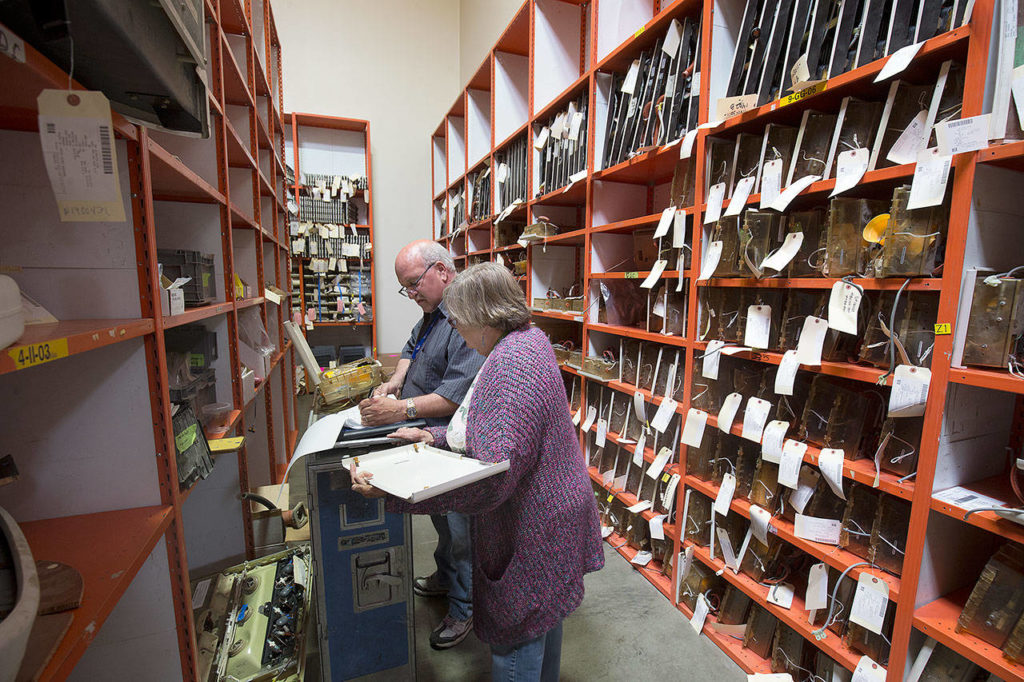This is one of a series of Herald Business Journal stories about the people and companies behind locally made products.
ARLINGTON — The New England Patriots wanted their new ride to look as fly on the inside as out.
Tired of squeezing into coach on charter flights, the football team bought a used Boeing 767-300 with 30 years of wear and tear.
The former American Airlines passenger jet got a new red, white and blue paint job and five Super Bowl logos (this was 2017).
But after years of commercial service, the plane’s interior also needed a refresh.
Commercial Aircraft Interiors, an Arlington company that employs 80, has been making tired commercial airplane interiors look brand new since 2003.
In 2017, the Patriots chose the Arlington firm to “cool” their jets. (The team actually bought two Boeing 767s; one as a spare.)
“We take used materials, refurbish them to a like-new condition and pair them with new components as required,” said Carlos Veliz, the company’s business strategist.
Besides a few sports teams, Commercial Aircraft Interiors serves domestic and international airlines and some militaries, Veliz said.
The new and retrofit aircraft interiors market is worth an estimated $26 billion a year and growing, according to Aircraft Interiors International magazine.
Said Veliz: “Everything a passenger sees inside the cabin from the flight deck on — we refurbish. That includes overhead bins, interior panels and galleys, along with the parts that can’t be seen, such as the supporting wire harnesses, secondary structures and hardware.”
The firm recently relocated from five smaller buildings to one 180,000-square-foot Arlington building, the size of a big-box store.
“We do the machining, wire harness assemblies, composites manufacturing and priming and painting here. We’re a one-stop shop,” Veliz said.
Inside the new warehouse, overhead bins and other components are stacked to the ceiling on huge shelves.
In the next few years, the company hopes to reach $40 million in annual revenue, said James Barnett, the firm’s general manager.
Commercial Aircraft Interiors also plans to develop an on-site training facility and partner with local schools to offer internships and employment opportunities.
Overhauling an airplane’s interior isn’t like remodeling the living room. Federal Aviation Administration regulations spell out how every part must be processed and certified, Barnett said.
It’s Robert Lott’s job to scour the world for used airplane interiors.
Airplane manufacturers, airlines and airplane leasing companies are primary sources, said Lott, the company’s sales and program manager.
Manufacturers may have new seats or other items for sale, Lott said.
Or airlines might jettison some or all of the cabin when they take out the frills and add more seats (to pack in more passengers).
Whether it’s a worn-out passenger plane destined to be scrapped or turned into a freighter, there’s plenty that can be salvaged, Lott said.
When he makes a purchase, the company typically dispatches a crew to carefully remove the interior.
“I always have a bag packed,” said Dustin Welch, the company’s vice president of field operations.
Welch oversaw the project to rehab the Patriots’ two jets.
First, they removed the old furnishings.”By the time we finished in there, it was empty tube,” Welch said.
The cabin’s soiled bins, ceilings and overhead panels were refinished with “bright white decorative coverings,” Welch said.
The jet’s dark sidewall panels, lavatories and galleys “got a much brighter laminate to help lighten up the interior,” he said.
The old narrow seats were removed, and larger seats with more legroom were installed.
Up front, the cockpit seats were re-covered with blue sheepskins, Welch said.
Refurbishing a commercial jet interior from “nose to tail starts at about $750,000,”said general manager Barnett.
“Beyond that the sky’s the limit,” he said.
Janice Podsada; jpodsada@heraldnet.com; 425-339-3097; Twitter: JanicePods
Talk to us
> Give us your news tips.
> Send us a letter to the editor.
> More Herald contact information.



























